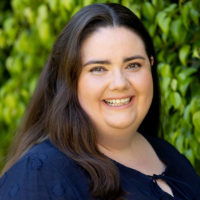Articles / Managing fibroids


writer
General Practitioner; Co-Director, Sydney Perinatal Doctors
Uterine fibroids are highly prevalent, affecting up to 80% of women by the age of 50, according to Associate Professor Alex Polyakov, obstetrician and gynaecologist at the University of Melbourne and Genea Fertility.
“The majority of fibroids are small and asymptomatic, and of little clinical significance,” says Associate Professor Polyakov, noting that many of these benign masses are incidental findings on investigation of other issues.
Risk factors for the development of fibroids:
• increasing age
• family history
• African-American ethnicity
• increased lifetime oestrogen exposure
• high intake of caffeine and alcohol
Diagnosis of fibroids is almost always via ultrasound. “This demonstrates size and position, including impact on endometrial cavity, and position in relation to the fallopian tubes,” Associate Professor Polyakov says.
Larger fibroids, or those in certain positions, may be the causative factor discovered when investigating a variety of pelvic symptoms including heavy bleeding (both menstrual and intermenstrual), pelvic pain, frequent urination, constipation and back or leg nerve pain.
“Classification relates mostly to the size and position of the fibroid.” Associate Professor Polyakov says this is important both in terms of the likely symptoms, and the treatment options.
Submucosal fibroids are most likely to cause abnormal bleeding. Those that protrude significantly into the uterine cavity are sometimes suitable for hysteroscopic removal. Associate Professor Polyakov says intramural or subserosal fibroids are more likely to cause pressure symptoms or pain than bleeding.
Fibroids may adversely affect fertility. It is possible for large or multiple intracavity fibroids to obstruct fallopian tubes or prevent implantation. Fibroids further down the uterus may affect cervical function, leading to incompetence and possibly miscarriage. “Preterm birth is not uncommon,” says Associate Professor Polyakov. Position may also obstruct vaginal delivery or complicate caesarean section, he says, noting that due to increased vascularity it is not ideal to remove a fibroid during a caesarean section.
Larger fibroids run the risk of causing pain if they outgrow their blood supply, leading to necrosis. Associate Professor Polyakov says this is a prominent feature in pregnancy.
Small, asymptomatic fibroids that are purely incidental may not require any treatment, nor even surveillance.
Treatment options for larger, symptomatic fibroids depend on symptoms, location and fertility plans.
Associate Professor Polyakov says general practitioners may instigate and monitor non-surgical treatments like tranexamic acid, non-steroidal anti-inflammatories, the oral contraceptive pill or a Mirena intrauterine device to decrease troublesome bleeding. For medical management of mild symptoms, he would recommend surveillance ultrasounds 6 to 12 monthly.
Gonadotropin releasing hormone agonists or antagonists are usually able to shrink larger fibroids due to hormone dependence. These are often used with add-back oestrogen and progesterone to mitigate the adverse effects on bone density, and cardiovascular and stroke risk. Associate Professor says that even then, they are not suitable long term. He may sometimes use them in the short term to shrink a fibroid enough to change the surgical option from laparotomy to laparoscopy.
Referral to a gynaecologist is needed when fibroids are particularly symptomatic, if symptoms are not improving with medical treatment, or if fertility is a concern. Associate Professor Polyakov will then often order magnetic resonance imaging to delineate the fibroids better and inform his treatment recommendations.
It is incredibly rare for a fibroid to undergo malignant transformation, but MRI can distinguish between a benign fibroid and a sarcoma.
Uterine artery embolisation may be performed by an interventional radiologist to decrease the blood supply to the fibroid, but Associate Professor Polyakov warns that this may not be worth the risk. “It causes quite significant pain because the fibroid undergoes degeneration, and there is scant evidence on the effect on future pregnancy,” he cautions.
The mainstream treatment option is myomectomy – surgical removal whether by hysteroscopy, laparoscopy or laparotomy. For multiple fibroids, a hysterectomy may be recommended.
Associate Professor Polyakov says patients may ask about lifestyle changes and alternative or complementary treatments. “There are really not a lot of studies that address this, and my advice would always be for a healthy lifestyle with a balanced diet,” he says, even though this is unlikely to shrink the fibroid or reduce symptoms. He says there is some place for treatments like acupuncture in very mild cases only. He says that although caffeine and alcohol intake increase likelihood of developing fibroids, reducing intake does not shrink them.
There is ongoing research into the genetics and treatment of fibroids, and Associate Professor Polyakov is excited by more recent advances in this area. He notes a non-surgical treatment option of magnetic resonance focused ultrasound for larger solitary fibroids, although this remains expensive for the patient and few services offer it.

Allergen Introduction – Practical Tips for GPs

Oral Contraception Update

What do we do With High Triglycerides?

An Update on Heart Failure in Primary Care

writer
General Practitioner; Co-Director, Sydney Perinatal Doctors

Very overestimated
Moderately/slightly overestimated
Quite accurate
Moderately/slightly underestimated
Very underestimated
Listen to expert interviews.
Click to open in a new tab
Browse the latest articles from Healthed.
Once you confirm you’ve read this article you can complete a Patient Case Review to earn 0.5 hours CPD in the Reviewing Performance (RP) category.
Select ‘Confirm & learn‘ when you have read this article in its entirety and you will be taken to begin your Patient Case Review.





